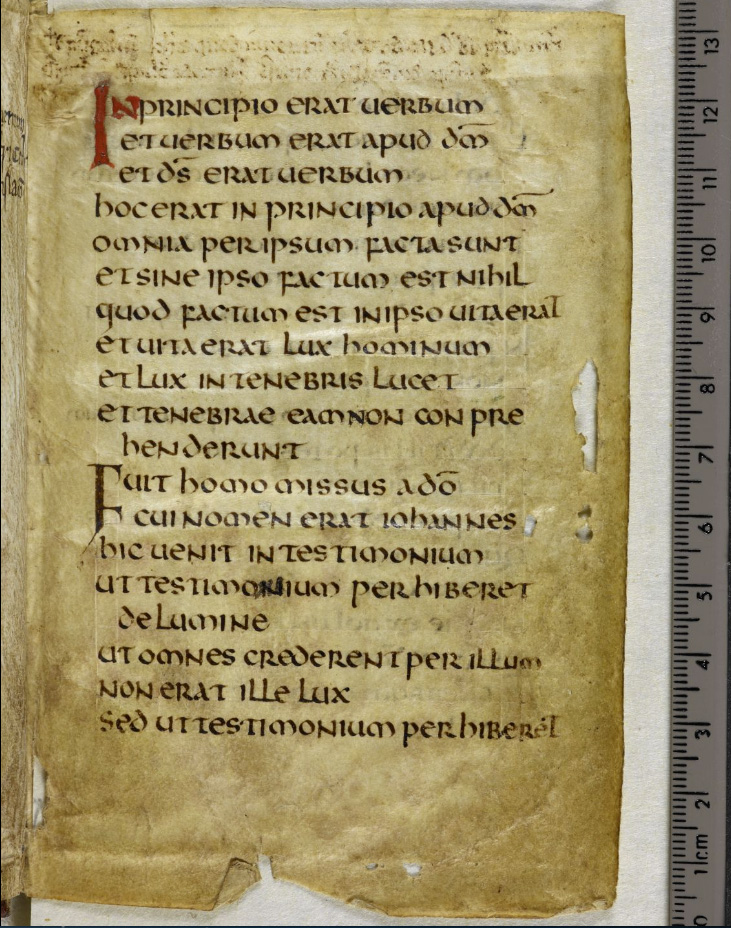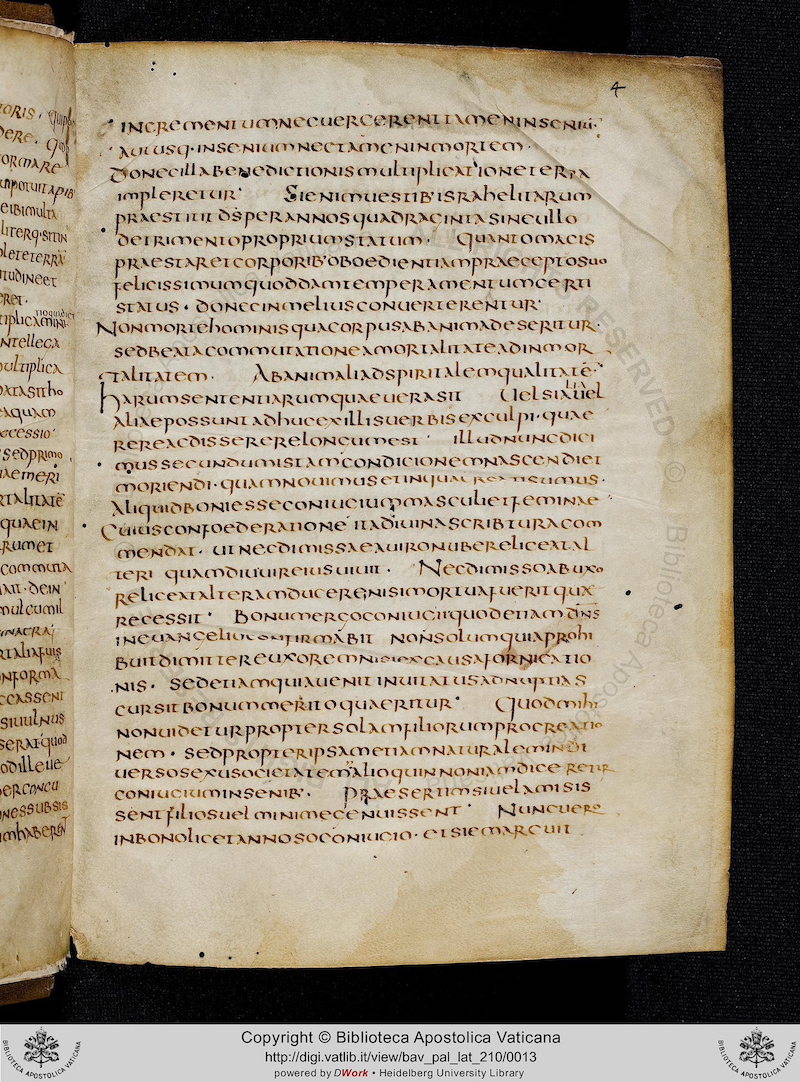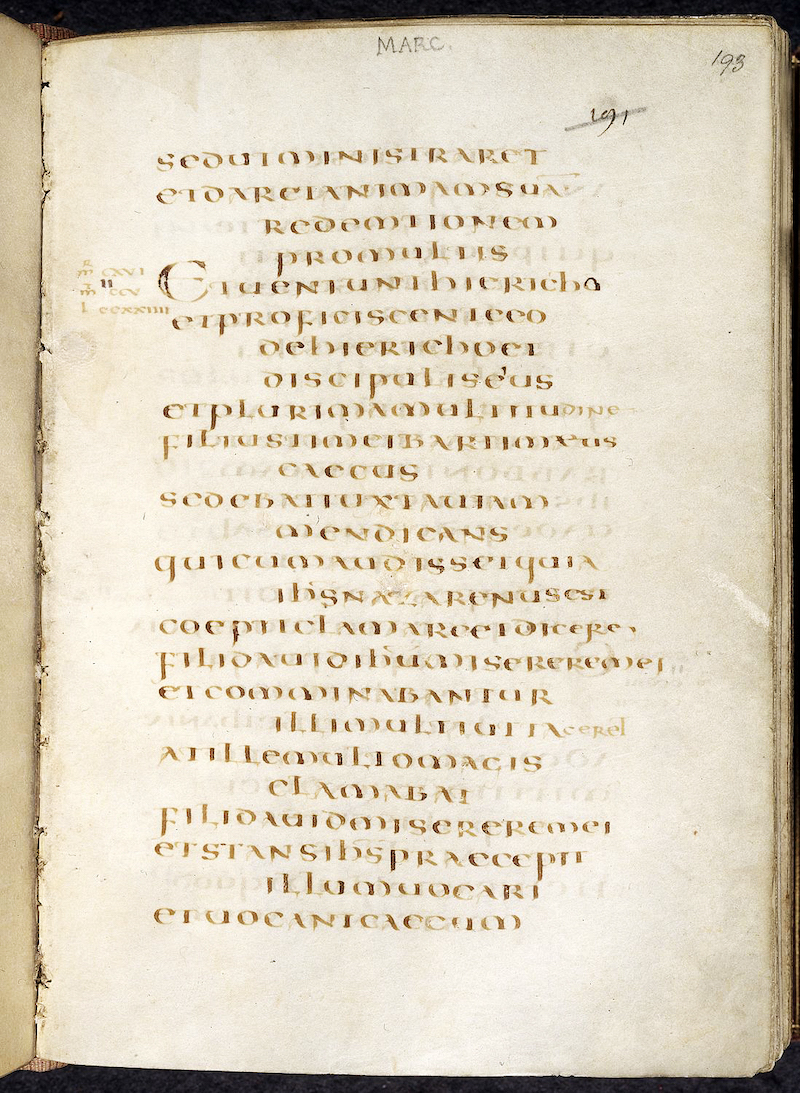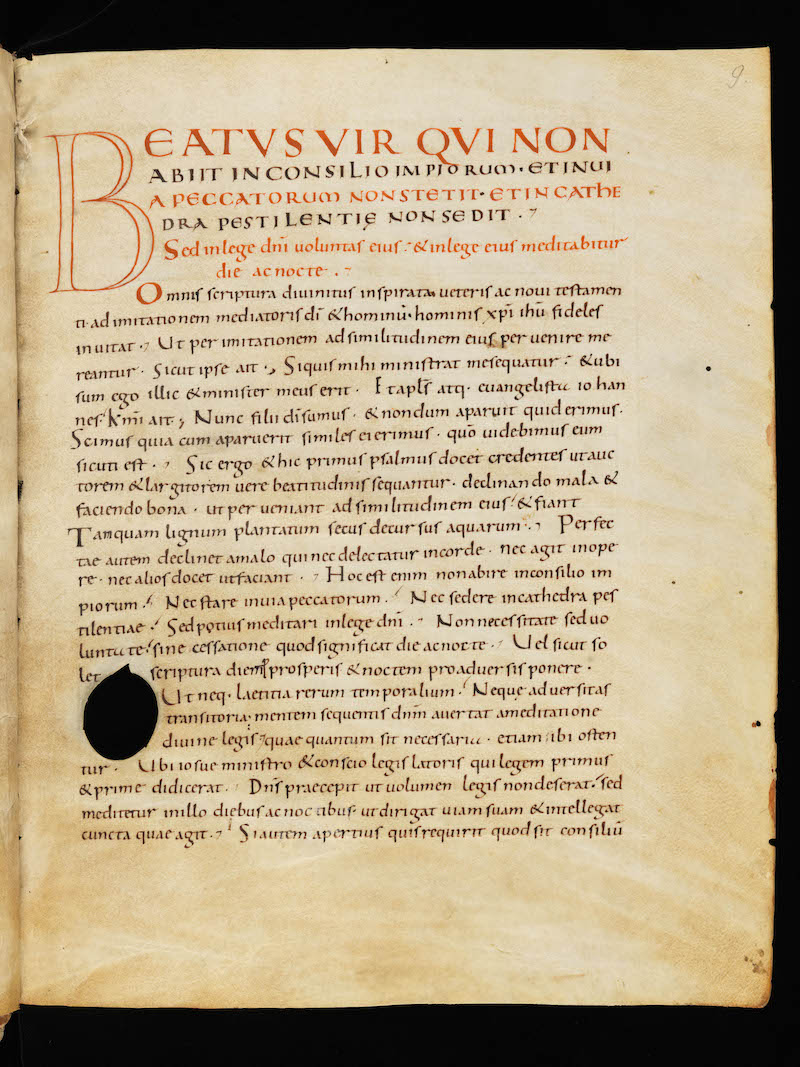
Uncial, 7th century
-
Title
Gospel of John -
Text
Gospel of John 1.1-8 -
Language(s)
Latin -
Writing System
Roman -
Script(s)
Uncial -
Country
Great Britain -
City
London -
Repository
British Library -
Shelf Mark
Add. 89000, fol. 1r -
Common Name
St. Cuthbert Gospels; Stonyhurst Gospels -
Century
7th century -
Year Range
698-698 -
Date Precise
698 -
Place Of Origin
England, Wearmouth-Jarrow, Northumbria -
Provenance
Durham Cathedral Priory (supressed 1540); Thomas Allen (d. 1632); George Henry Lee, 3rd Earl of Lichfield (d. 1772); Reverend Thomas Phillips, S.J. (d. 1774); Stonyhurst College; British Library -
Bibliography
The Stonyhurst Gospel of Saint John, ed. by T. Julian Brown with a technical description of the binding by Roger Powell and Peter Waters, Roxburghe Club (1969).
R.D. Stevick, "The St Cuthbert Gospel Binding and Insular Design," Artibus et Historiae 8/15 (1987): 9-19.
The St Cuthbert Gospel: Studies on the Insular Manuscript of the Gospel of John, edited by by Claire Breay and Bernard Meehan (2015).
-
External Facsimile
This tiny copy of the Gospel of John — only about 5 1/2 by 3 1/2 inches — was placed in the coffin of St. Cuthbert (d. 687) when he was reinterred at the abbey of Lindisfarne in 698. The coffin was opened again and the manuscript discovered at Durham in 1104. The book is still in its original 7th-century binding.
The Gospel is written in the "Capitular Uncial" script of the abbeys of Wearmouth-Jarrow, so called because it was more commonly used for chapter headings. This version of Uncial was specific to the scriptorium of Wearmouth-Jarrow, but was modeled on 6th-century Italian Uncial exemplars. Because it is modeled on much-earlier versions of Uncial, this hand does not display features we might otherwise expect from Uncial written as late as the turn of the 8th century, such as symmetrical, exaggerated bows on m or an exaggerated leftward lean to the stem of d. In contrast to the mains script in the Codex Amiatinus and the other great bibles created at Weamouth-Jarrow under Abbot Ceolfrith, Capitular Uncial displays relatively little contrast between thick and thin strokes. The penstrokes in this manuscript are closer in style to those of Rustic Capitals than Square Capitals. However, the m used by the scribe of this manuscript is nearly identical to that found in the Ceolfrith pandects, with a round, lobe-like left bowl and a hairstroke dipping into a more open curve on the right lobe.
Layout is per cola et commata — with each sense unit starting on a new line, as recommended by Jerome. The consistent word-separation is a sign that this is an English manuscript in imitation of Italian models, not an Italian original.
Ruling is dry-point, with double vertical rules at the margins to guide the start of each line on either side of the folio. New cola and commata start in the ruled marginal space, while text that carries over from the previous line's sense unit is inset from the left margin. The two vertical rules for the left margin on the verso of this folio are visible at the right of the written area on this page. The ruling was done after the quires were folded, which is an Insular method of preparing the writing surface.
At the top of fol. 1r is an erased and largely illegible inscription (not transcribed below) that apparently recorded the miraculous discovery of the manuscript in Cuthbert's coffin.
Acknowledgements: Described by Carin Ruff
Transcription
1 IN principio erat uerbum
2 et uerbum erat apud d(eu)m
3 et d(eu)s erat uerbum
4 hoc erat in principio apud d(eu)m
5 omnia per ipsum facta sunt
6 et sine ipso factum est nihil
7 quod factum est in ipso uita erat
8 et uita erat lux hominum
9 et lux in tenebris lucet
10 et tenebrae eam non conpre(-)
11 henderunt
12 Fuit homo missus a d(e)o
13 cui nomen erat iohannes
14 hic uenit in testimonium
15 ut testimonium perhiberet
16 de lumine
17 ut omnes crederent per illum
18 non erat ille lux
19 sed ut testimonium perhiberet
Paleographic Features
1. You can see the ruling most clearly at the right edge of the written area, starting around the end of line 3. Since the ruling is done with a hard point on folded sheets, the ruling lines show through from one side of the parchment to the other. Here, the ruled lines that form the left margin of the verso of this folio are clearly visible at the right side of this page's written space.
2. The characteristic m of Wearmouth-Jarrow Capitular Uncial is easy to see in homo missus in line 12.
3. The muddied patch in line 15 is from a correction on the other side of the leaf showing through here.



